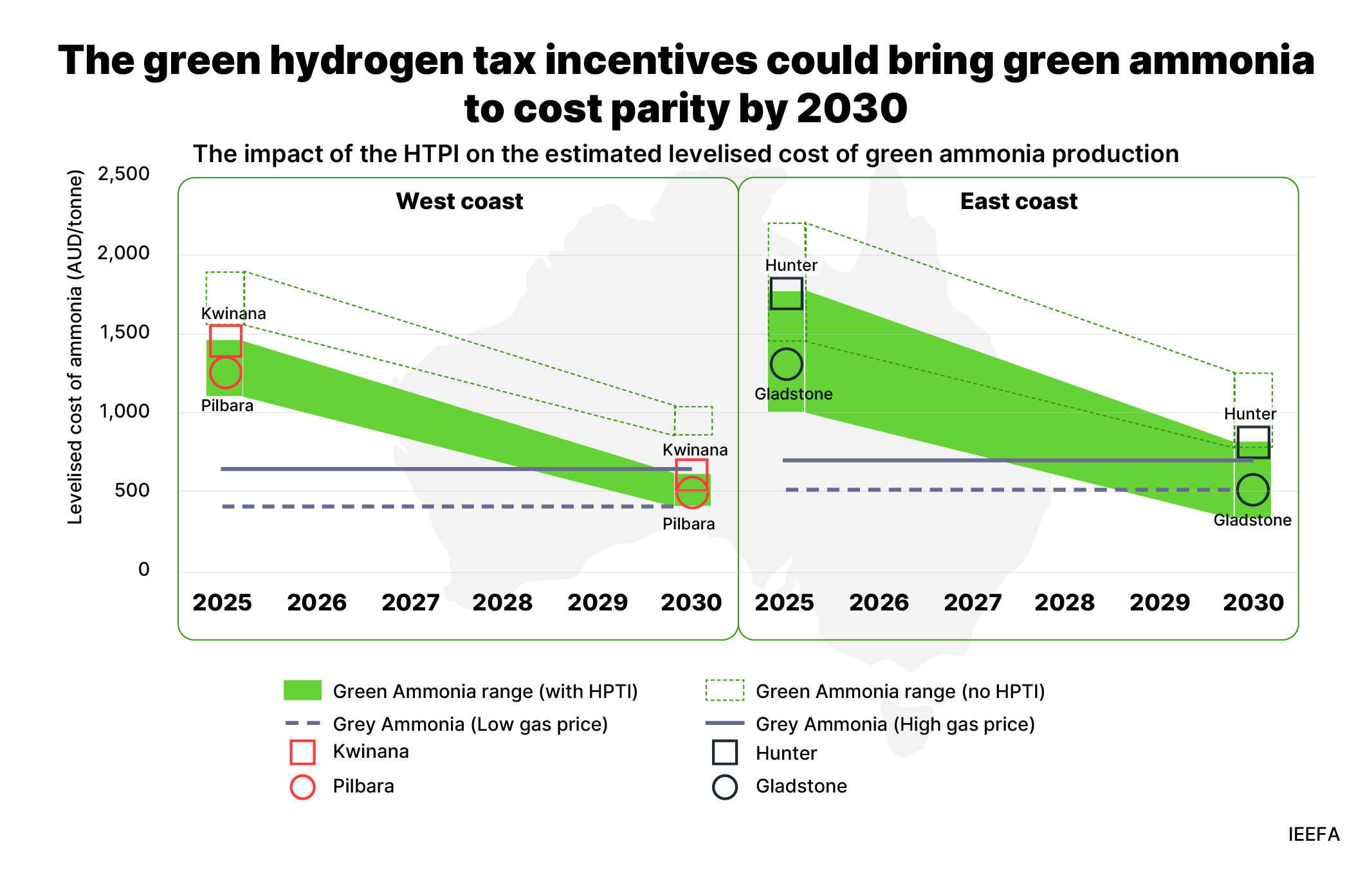Local ammonia production the ideal early adopter for green hydrogen

Government incentives can spark green hydrogen demand if Australian miners buy in
Key Takeaways:
Ammonia production is a logical first beneficiary of the Australian government’s Future Made in Australia budget measures, which have allocated more than AUD15 billion of critical funding support for green hydrogen.
If near-term investment can be unlocked to deliver economies of scale, the government incentives could make green hydrogen cost-competitive with gas for ammonia production by the early 2030s.
Switching a portion of existing ammonia feedstock to green hydrogen could create large volumes of near-term demand; a proposed project in Western Australia presents a rare opportunity to demonstrate green ammonia production at scale.
Introducing progressive requirements for green explosives uptake by miners could help kickstart Australia’s green hydrogen industry while minimising the financial impact, especially if combined with further government support for early projects.
20 June 2024 - (IEEFA Australia): Government measures to foster development of a green hydrogen industry in Australia should prioritise local ammonia production, according to the Institute for Energy Economics and Financial Analysis (IEEFA).
Announced in the Australian federal budget in May, the government’s Future Made in Australia strategy will see more than AUD15 billion allocated to the promotion of a local green hydrogen sector. In a new briefing note published today, IEEFA argues that the logical first recipient of these funds would be the production of ammonia for local use, made using green hydrogen produced using renewable energy.
Amandine Denis-Ryan, CEO of IEEFA Australia and co-author of the briefing note, says: “Our research shows that Australia’s ammonia industry is in pole position to capitalise on the new funding measures announced in the budget. And this in turn would provide the robust platform for a viable green hydrogen industry in this country.
“There’s been a lot of hype about possible uses for green hydrogen, but recently the field has narrowed to a handful of niche applications. In Australia, two of the most promising uses for green hydrogen are in iron production, and in ammonia. However, we believe ammonia production is the obvious first mover: hydrogen is already its primary chemical feedstock, and some green hydrogen can already be injected in existing plants without requiring any costly equipment change.”
IEEFA’s research shows that the new government incentives could see green hydrogen rapidly become cost-competitive with the natural gas that is currently used in ammonia production. By the early 2030s, production costs for green ammonia (made from green hydrogen) could reach parity with conventional grey ammonia (made using methane) in some regions where existing plants are located.
A crucial aspect of this is the need to unlock near-term investment to deliver the necessary economies of scale; something that will require near-term leadership and investment from ammonia producers and customers, potentially supplemented by additional government support.

The briefing note builds on earlier research from IEEFA, which identified decarbonising ammonia production as a potential ‘triple win’ for Australia that would: alleviate pressures in our domestic gas market; reduce emissions; and catalyse Australia’s emerging green hydrogen industry. Australian mining companies could play an integral role in driving the transition as they consume about half of Australia’s ammonia through explosives. IEEFA found that, if given the right incentives, miners could shift to green explosives for a minimal increase in operating costs.
Cameron Butler, IEEFA guest contributor and the note’s co-author, said: “By helping to bridge the cost premium for green hydrogen, the new funding measures significantly bolster the economic argument for a rapid transition to green ammonia. Introducing progressive requirements for green explosives uptake by miners could also help kickstart Australia’s green hydrogen industry, while minimising the financial impact, especially if combined with further government support for early projects.”
Switching up to 30% of existing ammonia feedstock could create more than 100,000 tonnes of near-term demand for green hydrogen without requiring major equipment upgrades. IEEFA’s briefing note highlights one highly promising near-term opportunity to demonstrate large-scale integration of renewables and green hydrogen in the domestic ammonia supply chain. A proposed gas-based expansion of CSBP’s ammonia plant in Kwinana, Western Australia, is scheduled for final investment decision this year. Running this project with green hydrogen instead could create demand for more than 50,000 tonnes of green hydrogen annually.
Ms Denis-Ryan adds: “Further funding support would strengthen the case for a large-scale green ammonia plant in Kwinana. This is a pivotal moment for Australia’s energy transition. While we currently lack a green hydrogen supply chain, our ammonia industry offers a ready-made demand source that can help develop infrastructure, expertise and innovation. Looking beyond ammonia, this could unlock future economic opportunities like green iron and steel, and position Australia as a global renewable energy leader.”
Read the report: Local ammonia production the ideal early adopter for green hydrogen
Media contact: Amy Leiper, ph 0414 643 446, [email protected]
About IEEFA: The Institute for Energy Economics and Financial Analysis (IEEFA) examines issues related to energy markets, trends, and policies. The Institute’s mission is to accelerate the transition to a diverse, sustainable and profitable energy economy. (ieefa.org)












